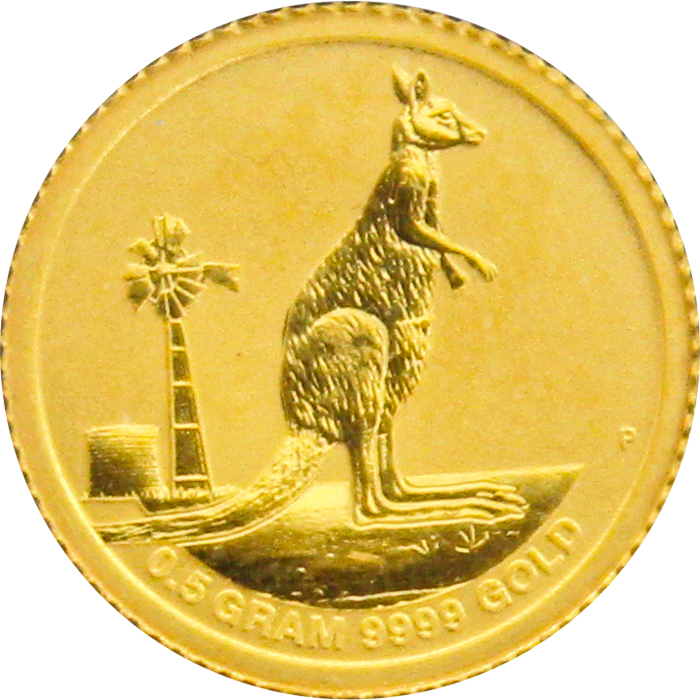Gold investment coin Kangaroo Kangaroo 0.5g Miniature 2012
The product cannot be ordered now.
NOT IN STOCK
Detailed description
Perth Mint Miniature
Display coins weighing 0,5 g and 1 g
RAZITKO_POSTOVNE_ZDARMA_NENI
Miniature Australian Kangaroo 2012
The delicate miniature of the world famous Kangaroo gold investment coin issued by the Perth Mint in 2012 is precisely minted from the purest 99.99% gold weighing an incredible 0.5 grams. The coin depicts a contemporary motif of a standing kangaroo, with a windmill and water reservoir behind it in the background. The portrait is complemented by the unit of weight and purity. The obverse side traditionally depicts Ian Rank-Broadley's portrait of Queen Elizabeth II along with the year of issue and denomination.
This exclusive coin comes in a protective plastic capsule and is presented in a colourful card-shaped package.

Kangaroos
Kangaroos (Macropodidae) are the second largest family of marsupials (after the marsupials) with 54 species in 11 genera. However, it does not include the kangaroos, which have a separate family, although they closely resemble the kangaroos.

Kangaroos are found in Australia and Tasmania, New Guinea and adjacent islands. (The red-backed kangaroo is also artificially introduced in northern and central Europe. At the turn of the 19th and 20th century it was bred in the Czech Republic in a game preserve near Poděbrady.) They inhabit a variety of biomes, from desert to rainforest.
Kangaroos have a long and narrow skull, a mostly elongated snout, and a head that looks tiny relative to the size of the rest of the body. Their stature is medium to large. Some species grow up to two metres tall. Weights range from 0.5 kg to 90 kg. Kangaroos are flat-footed, with a long narrow hind paw and very strong hind legs. The fourth toe on the hind paw is the longest and strongest, and kangaroos use it extensively for bouncing when jumping. The fifth (outer) toe is also large. Like all dicotyledons, they are syndactylous (the second and third toes on the forelimbs are conjoined). The thumb is sometimes stunted, but usually completely absent. Most species have a massive and long tail, but it is not prehensile. Instead, it is used more as a balancing or stabilizing organ.
Kangaroos are herbivores, most of them grazing on grasses and herbs. They may also eat ferns, shoots, leaves and berries. They do not avoid poisonous plants. The grass they eat is very tough and chewing it wears down the teeth. Although kangaroos have four pairs of molars on each side, only the front ones are used. If they wear out and fall out, they are replaced by others. Occasionally a kangaroo will live to see the last pair worn out. Then they starve to death. Only the rusty kangaroo grows molars for life.
Product Specifications
Application form
Thanks to our position on the market, we can try to provide you with a product that is currently sold out or unavailable for a longer period of time. Simply fill in the application form and we will contact you as soon as we are able to secure the product.
Filling in the application form is not binding for you.
Buyback contact form
We will be happy to buy investment metals purchased from us or from our competitors. Our customers always get the highest price offered at any given time. Fill out the form below and we will contact you. Thank you for your trust.




